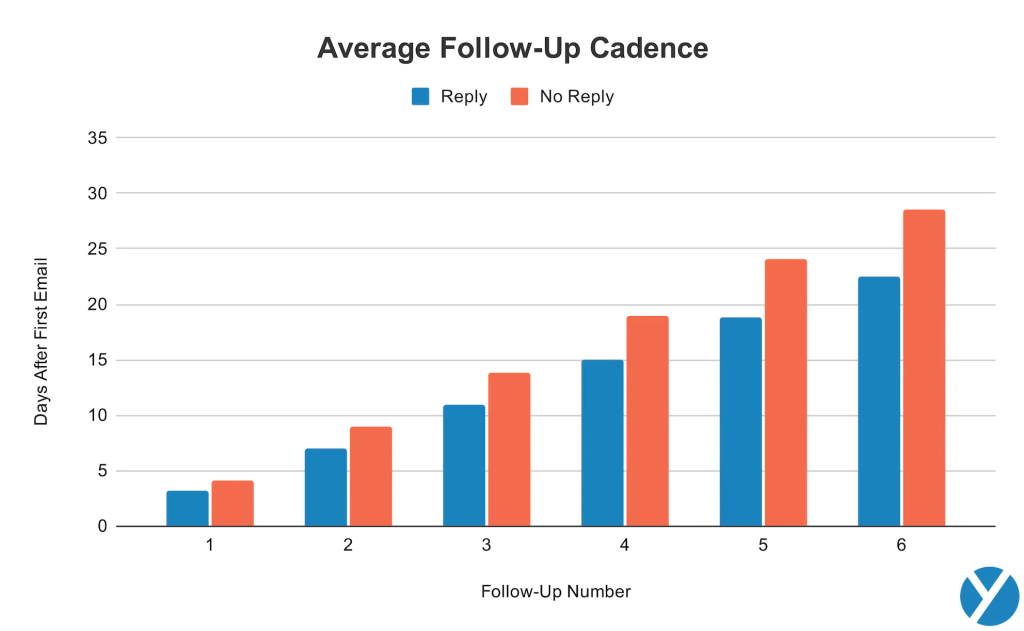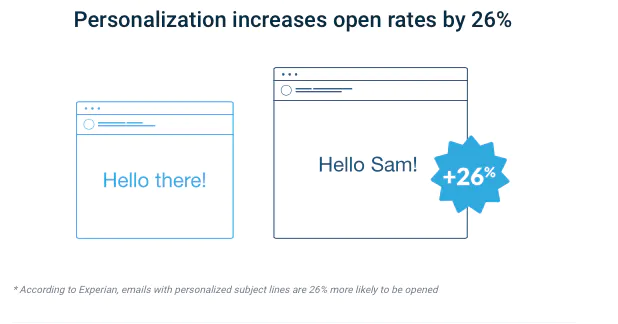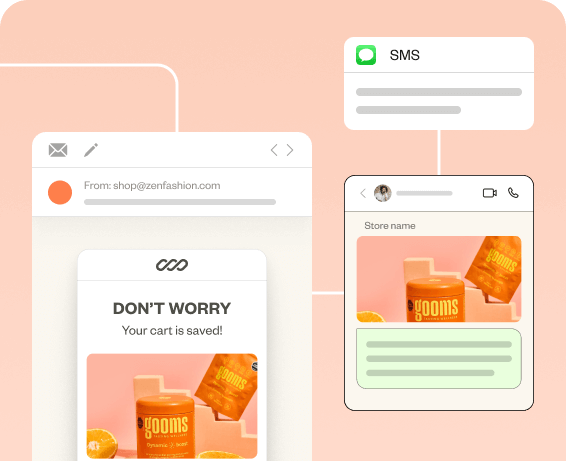Persuading the customer to close a deal faster through email marketing is more challenging. When your initial email gets no answer, then it’s time to send a follow-up. Reaching customers through order follow-up emails increases the chance of a conversion.
A study says a single follow-up email can boost your response rate by 65.8%. Moreover, people’s final decisions to buy products occur more often after follow-ups. Many marketers see an improvement in their sales revenue and ROI after sending more follow-up emails.
When it comes to customer satisfaction, one of the most important things you can do is follow up with the customers after they place an order. A well-crafted order follow-up email can help you do this, but there are a few dos and don’ts to remember if you want to ensure your email is effective.
In this article, we’ll go over some of the most important things to keep in mind while crafting your order follow-up email, so you can make sure that your customers are happy and satisfied with their purchase.
Send order follow-up email to customers with Retainful and give them an amazing shopping experience.
DOs
Follow-up emails are no less critical than initial emails. Take two to five attempts to encourage potential customers to give their responses. Keep providing value to each email so recipients can directly get your objectives.

Besides, avoid any trivial mistakes in your follow-up emails, such as typos and grammatical errors. As the order follow-up email is essential for your business growth, we’ve put together five best practices below.
1. Make Your Email Personalized
When it comes to marketing, personalized email is one of the keys to getting high open rates. Personalized email boosts open rates by 26%, making your email stand out in the crowd and attract recipients better.
On top of that, you can use two approaches to creating personalized order follow-up emails. First, you write a follow-up email from scratch; second, you leverage automated personalization using email marketing tools.
Writing a sales follow-up email from scratch is an excellent idea only if you only need to reach a few recipients. However, if you need to send automated follow-up emails to many people, using automated personalization helps you stay efficient.

You can greet recipients by calling their names on the subject and opening lines. There’s nothing more personal than to call people by their names. You can also mention their works to show and evoke interest.
2. Craft Catchy Opening Lines
Crafting a catchy opening line in a follow-up email is important for a few reasons. First, it immediately grabs the recipient’s attention and makes them more likely to read the rest of the email. Second, a good opening line can set the tone for the rest of the email and make the recipient more open to the message being conveyed. Lastly, it can help establish a connection with the recipient and make them more likely to remember the email and potentially make a purchase. Overall, a catchy opening line can greatly impact the success of an Follow-Up email.
To make a catchy opening line, you can spark interest by providing questions, discussing their problems, mentioning mutual connection, mentioning recent events, quoting movie scenes, and so on. In addition, state the context of why you’re sending the email.
Here are a few examples:
“I’ve noticed fantastic posts on your LinkedIn and website on (Topic). I spotted something that resonated with me, which was (Quote). Anyway, …”
“Hi Ben, your recent product launch on (Date) was amazing! Do you plan to expand your brand on a global scale? If it’s the case, our team can help you….”
“Hey, Jen. I noticed we have a mutual connection with Bill Mathew. I’m impressed by what you’re doing at XYZ Company as a (Job Title). I would love to reconnect with you about our last collaboration on ….”
3. Always Add Values
It’s always necessary to restate your purpose in follow-up emails. Your recipients will never scroll back to your first email to find your objectives. So, unclear sales follow-up emails will most likely be ignored.
Always provide information about your intention or recent update on your project. For instance, you give social proof to your clients, and you can tell them how your product and service become a game changer for them.
Take a look at some examples below:
“I want to know your response about our collaboration on (topic). I’m positive your readers will find it helpful to grow their small businesses”.
“I noticed that your company is busy promoting a new product. We can help you generate more clients with our (product name). So I thought reaching out to you would be a great idea….”
“I understand your struggle in converting prospects. Perhaps, our (your product name) can help you generate sales better….”
“I got some exciting news for you. Our company just launched (product name). You might like it as it can assist you (in achieving goals)!
4. Keep It Short and Clear
Short emails are the best. Emails comprising around 95 words perform better than longer copies with 170 words. On top of that, short emails gain 5.81% higher CTR. Hence, keeping your order follow-up emails short and straightforward is important.
A way to make your email effective is to avoid unnecessary greetings like “I hope you’re doing well.” You can still be polite by structuring and writing your email appropriately. Moreover, stay concise and straightforward to make readers get your message quickly.
5. Include a Persuasive CTA
A persuasive call to action helps you achieve goals faster. You ask audiences to do the action that you want to achieve. For example, you want people to sign up, buy, subscribe, join, and so on.
In other words, you guide readers to take the next step, making it easier for them to respond to your email. On the contrary, your customers don’t respond to your email as they aren’t appealing or beneficial enough to do anything with.
For instance, you can make your CTA sounds like this:
“So, will your next action be (XYZ) or (ZYX)?
“My CEO is excited to partner up with you. What should I tell him?
“What do you think of our deal? Let me know your opinion.”
“Just to confirm. You want to try our (product). Is that correct?
“Would you jump on a 15-minute call this week to explore our latest product?”
Send automated order follow-up emails to customers in an easy way with Retainful.
DON’Ts
As a marketer, it’s important to spot problems in your email marketing. Don’t delay to clear out mistakes and build more effective order follow-up emails.
One of the most common mistakes is not personalizing follow-up emails. So, take time to identify your email recipients to approach them with a better-crafted email message.
There are some more points you need to avoid when crafting follow-up emails. To make yours outstanding, check out some points you need to avoid below.
1. Write “Follow-up” in the Email Subject
Avoid writing “follow-up” in your subject line. It doesn’t have any value for your audiences that can make them ignore your email. For instance, avoid using “I just need to follow-up…“, “Follow-up for collaboration…“, etc.
You can write better subject lines by directly mentioning the topic of your message. Or else, you can state your intention. Other than that, you need to be personal in your follow-up emails. Consider adding their names to your subject lines to greet the recipients.
Some examples would be:
“Hi John, do you want to try our new product?”
“Amanda, we got exciting news for you.”
“Dear Dave, our innovation can help you boost sales.”
2. Ignore the Data
If your follow-up emails barely drive results, it’s time to do an analysis. You can use any email marketing tool to assist you in looking for the data, and it has an email reporting feature to help you spot problems and fix them in time.
You can get some insights, including word choices and email structure. Besides, you can boost email performance based on the data. For instance, your subject line needs to be more captivating if you get low open rates.
Or, if you are still waiting for a response even though recipients open your email, your content might not be engaging. Data-driven reports and analysis help you construct follow-up emails based on your target recipient’s preferences and buying behaviors.
3. Sound too Desperate
Sounding too desperate in your follow-up emails is a big NO. There are several phrases that you may not know that make you sound desperate. Some of the phrases you need to avoid are:
- Just checking in
- Friendly reminder
- I know you’re busy
- I’m following up because
- I’ve tried to reach you
- Just checking in
You can improve your follow-up by eliminating desperation phrases and sentences. Consider adding social proof, images, explainer videos, enticing CTA, deals, or else to encourage recipients to take action.
Depending on the tone you use in your email, you can use humor to attract recipients. The right amount of humor can excite and please people, encouraging them to respond willingly.
4. Burry Vital Messages in Long Text
As stated before, there are better strategies to try in email marketing than beating around the bush. People will spend only less time scanning through their emails to find the central message of it. So, simple and short follow-up emails not only convey the message straight but also saves recipients time a big deal.
Create effective follow-up emails by greeting appropriately, stating your intentions or objectives, and giving context and value to your readers. You may comment on their works to spark excitement, but exaggerating it may bring you more harm than good.
5. Send at the Wrong Time
There are specific days and times to send emails. You can get the best result by sending your email at the perfect time. The rule of thumb for sending marketing emails is during weekdays. But, avoid Friday as people may get busy completing deadlines and getting ready for the weekend.
Furthermore, emailing too early and too late is never a good option. According to a report, emails get the most replies when they are sent between 8 am to 4 pm. Later than 4 pm, the reply rates drop and can be ineffective for your marketing.
Launch Retainful and Send Order Follow-Up emails to boost customer engagement & Sales in an easy way.
Takeaway
Creating a follow-up email to customers can be challenging and tricky. Sounding too robotic and not personalized is one of the reasons your follow-up emails fail to capture potential buyers.
The above Dos and Don’ts can help you with the right order follow-up emails. You can boost your marketing emails and attract more customers without sounding too desperate to your prospects.
Follow-up emails may sound unnecessary to some, but many have proven that follow-up emails help increase companies’ sales. You can create email templates from the points above and polish your follow-ups optimally to achieve your goals.
Frequently Asked Questions
There is no clear rule for sending follow-up emails. However, you need to wait several days before sending your first follow-up.
After your initial email, you can send your first follow-up email to a recipient after three days without any response. If you still get no response, it’s best to wait a little longer, around seven days, to launch your next email.
You can continue with a seven-day interval in sending follow-up emails. Or you can extend it to ten days.
Writing follow-up emails is a load of work if you do it manually. You can use automation tools to generate personalized follow-up emails to your prospects.
You can easily find email marketing tools to help you create email templates and track your performance. Some tools provide analytics to help you fix problems and build a better email marketing strategy.
Ideally, sending three to five follow-up emails can help boost the opportunity to get a positive response. However, you need to mind the time intervals between follow-ups so they won’t annoy audiences.
Make each of your follow-up emails valuable to recipients. It’s better to always state your purpose and value rather than overly promoting your product or service.


